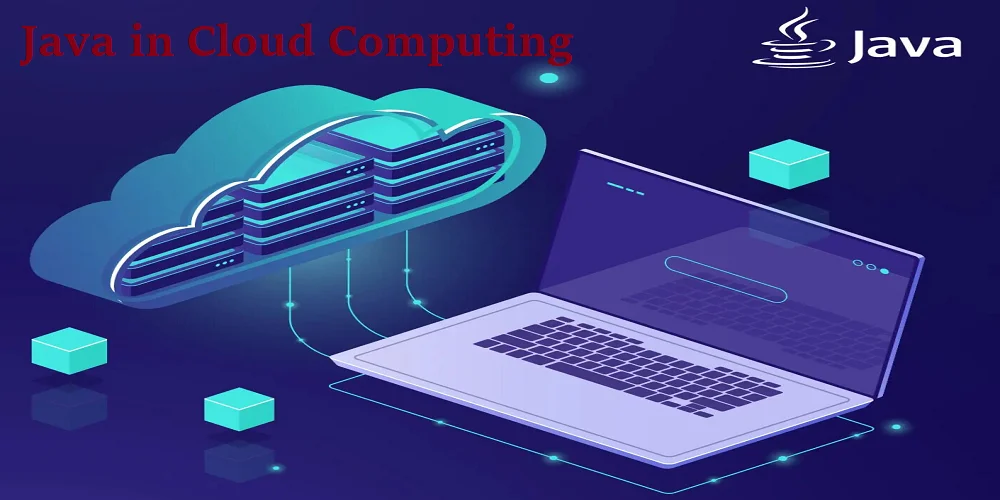Java forms an important cornerstone in enterprise development, doing so for a continuous period of more than two decades by running applications that are key to businesses in virtually all business niches. Its robustness, platform independence, and a huge ecosystem of libraries and frameworks make it the most favored choice for developers when developing complex and scalable enterprise systems.
But then, the ever-evolving needs of a modern enterprise keep innovation a never-ending process in the advanced tools and technologies used in development. That is why Java 21 is coming as the next big thing in the ubiquitous language — an agent of change in the way we take on enterprise development.
Java 21 Revolutionizing Enterprise Development Challenges

Enterprise applications are inherently complex because they have to deal with large volumes of data, involve complex business logic, and support high performance and scalability. Here are some of the common Java 21 revolutionizing enterprise development challenges developers face:
Concurrency Management
Although many tasks may need to be executed concurrently for responsiveness and efficiency, coordination between them becomes necessary. Threading approaches, in general, make awkward code, which is often complex, leading eventually to race conditions.
Scalability and Performance
Enterprise applications should be designed to handle changes in workloads and user demands without altering their processing capabilities. This can only be achieved by optimal scalability and performance, which would call for efficient use of resources and a good architecture design.
Maintaining Large Codebases
Enterprise applications tend to become very large codebases over time. The management and maintenance of this kind of code becomes a headache, making development slow and less efficient when it comes to fixing bugs.
Java 21 Revolutionizing Enterprise Development: Game-Changer
The main innovative concept that a virtual thread introduces involves creating virtual threads as a light alternative to classical OS-level threads. Because virtual threads are managed directly by the Java Virtual Machine, it avoids incurring the cost of creation and context switching on the OS thread itself. That is to say, Java 21 revolutionizing enterprise development has several major advantages:
Simplified Concurrent Programming
Virtual threads abstract away low-level threading complexity, enabling the programmer to deal only with the core application logic—concurrent code development made much easier.
Improved Scalability
Virtual threads are much finer-grained in their weight in comparison to OS threads. An application in this case can create a lot many more virtual threads without consuming much resources. It provides more scalability for applications having high-concurrency scenarios.
Reduced Resource Consumption
Virtual threads consume a lot less memory and processing resources than OS threads. These add to the resource footprint for enterprise applications, which in turn translates directly to better performance. They play a part in harnessing hardware resources better.
Table: Traditional Threads vs Virtual Threads
| Feature | Traditional Threads | Virtual Threads |
| Management | Managed by the Operating System | Managed by the Java Virtual Machine (JVM) |
| Resource Consumption | High (OS overhead) | Low (lightweight) |
| Scalability | Limited by available OS threads | Highly Scalable (large pool of virtual threads) |
| Programming Complexity | Complex (manual thread management) | Simpler (abstracts away low-level threading) |
Performance Enhancements: Beyond Virtual Threads
Java 21 introduces a few more performance improvements, which make deeper enterprise development possible. These improvements, on the whole, contribute a great deal to better and more efficient building of Java 21 revolutionizing enterprise development.
Faster Garbage Collection
Faster garbage collection in Java 21 translates to reduced pause time and overall application responsiveness, which is particularly beneficial for most applications dealing with large data sets.
Optimized Memory Management
Java 21 has improved memory management techniques, which consequently affect improved and better handling of memory. This way, the application will have an enhanced performance, and the potential for memory-related problems will be minimized.
Reduced Application Startup Times
Java 21 has had some optimization that will now lead to a result reducing the time used by applications to load and initialize. It means the users experience it sooner and demonstrate better responsiveness of the system to the user in general.
Modernization for Microservices Architecture
Microservices architecture is a new paradigm that has taken enterprise application design and development by storm. Microservices are small, independent, loosely coupled services, which talk to each other using APIs. This makes Java 21 revolutionizing enterprise development, the best language to be used in building a Microservice-kind application because:
Lightweight and Effective Components
Virtual threads improve the performance when Java 21 revolutionizing enterprise development. After that, they can be used to build lightweight and effective microservices. This will lead to better use of resources and improved scaling within a microservices environment.
Improved Communication and Scalability
Java 21 support modern communication protocols by effectively enabling proper communication between microservices. In addition to that, the scaling features of virtual threads help single microservices capably offer services under heavy loads.
With Java 21 revolutionizing enterprise development, it is straightforward for any developer to build a resilient and scalable microservices-based application from which modern enterprise environments demand peak performance.
Developer Productivity Boost: Writing Better Code, Faster

Java 21 is not only a performance-driven step but also a step that raises the odds of developer productivity. So, how Java 21 revolutionizing enterprise development makes it possible for developers to write good code and go faster in the process.
Simpler Concurrency Management with Virtual Threads
As mentioned, virtual threads separate the developer from the barnacles of low-level thread management, providing them freedom from worrying about low-level details. They can thus focus their effort on the core logic of their applications, effectively making the application design cleaner and much more maintainable.
Reduced Code Complexity and Improved Maintainability
Code written with overall Java 21 improvements, such as virtual threads and other performance improvements, will inherently be simpler. This means that the applications are not strongly complex, so it becomes easy to understand, debug, and maintain them in the long run.
Enhanced Developer Tools
Java’s development ecosystem is continuously growing, and with Java 21 revolutionizing enterprise development, the list of new and enhanced tools just keeps getting longer. It provides smarter code completion, powerful debugging, and advanced static analysis that leads to faster development cycles with fewer errors.
The features of Java 21 include improved code maintainability, logical concurrency management, and advanced developer tools. Java 21 revolutionizing enterprise development improves productivity to make way for quick and efficient apps.
Security Considerations: Application Protection
Virtual Threads have a lot of positives when Java 21 revolutionizing enterprise development, but one always has to consider some security implications.
Understanding Thread Safety
Although the virtual thread makes concurrency easy, it does not relieve a developer of the responsibility to ensure that the code is thread-safe. It means the proper handling of shared resources and access points of data to avoid race conditions and corresponding security issues.
Security Best Practices
It goes without saying, but when creating secure Java 21 applications, established security best practices like secure coding principles, code reviews, and vulnerability scanning come into play whether or not you are using virtual threads.
Staying Updated
Apply the latest security patches for Java runtime and libraries to ensure proper mitigation of known vulnerabilities.
By taking a security-minded outlook and following best practices, developers of Java Application Development Company can realize the benefits that virtual threads have available for enterprise apps to keep them secure and performing.
Long-Term Support and Adoption Strategy: Making Transition Smooth
Java 21 will continue on the established model of long-term support (LTS) for Java, guaranteed with several years of official support by Oracle. It gives enterprises the same comfort and assurance when Java 21 revolutionizing enterprise development.
Begin with an Assessment and Proof of Concept
Before the release of Java 21, features/advantages must be assessed in limited scopes. Embed a project proof of concept as a basis to measure the performance, developer productivity, and integration with existing systems.
Developer Training and Education
Be it ensure that the right sort of training and resources, concerning new features or functionalities, are introduced in Java 21 at the developers’ end so that they can optimally use this.
Gradual Integration
You could plan to adopt Java 21 on a phase-wise basis, either for new projects in development or for some modules of your existing applications. This way, the transition can be smoother, and if there are any likely hiccups, then at least they can be identified previously.
Above are the adoption strategy of Java 21 revolutionizing enterprise development. Along the way, with a properly coiled adoption strategy, organizations will be able to reap the full bounty of Java 21 by fittingly eliminating their risks and ensuring migration success.
Read More : Unlock advanced data search with Vector Databases
Conclusion
With Java 21 revolutionizing enterprise development and pushing the boundaries, it gives developers the freedom and power to create resilient, scalable, and highly performing applications. Performance improvements and suitability for microservices architecture development are some of the aspects that make virtual threads have those great powers. Therefore, through focused developer productivity and long-term support, a smooth transition to further innovation within the Java ecosystem will be guaranteed.
Frequently Asked Questions (FAQs)
1) Does Java 21 maintain backward compatibility with older releases?
Java 21 will be backward-compatible with previous releases of Java, meaning the codes you write for older versions will usually run without dropping a sweat. However, with Java 21 revolutionizing enterprise development, you have to upgrade your code to enjoy the new functionalities that it brings in.
2) What is the disadvantage of virtual thread implementation?
Just as those benefits provided by virtual threads, so there are a few possible benefits that should be kept in mind:
- Learning Curve:
Virtual threads are a new concept; thus, the developers would need time to cope with them to understand how best to use them.
- Debugging:
De-bugging problems of virtual threads are not the same as de-bugging of normal threads. Developers would now have to learn debugging differently.
- Maturity:
This feature is fairly new, so the development of virtual threads might be underway and possibly have some limitations in comparison to other well-established mechanisms.
3) Where would I get the needed information about Java 21?
There are a lot of resources available for learning more about Java 21 revolutionizing enterprise development:
- Official Java Documentation:
This website highlights the new features and functionalities included in Java 21, with a special focus on virtual threads, performance improvements, and changes in APIs.
- Java Tutorials:
Java Tutorials is an online, interactive website that provides developers with lots of useful examples to understand how new features in Java 21 will be applied. You can get such tutorials at Java Tutorials.
- Blogs and Articles:
Numerous blogs and articles on the written web by professionals in the field talk about Java 21 revolutionizing enterprise development and how it has controlled enterprise development. These can be a good way to understand in-depth information.
- Online Communities:
The Java development communities in forums, as well as online groups, provide ample chance for interaction, inquiry, and response exchange in matters about Java 21 revolutionizing enterprise development. Being an active participant within these communities is often a good opportunity to keep learning from other developers and get a feel of what is happening within the Java ecosystem, at the time.
Check out our detailed comparison between Java 23 and Java 22 to see what’s new and improved.



